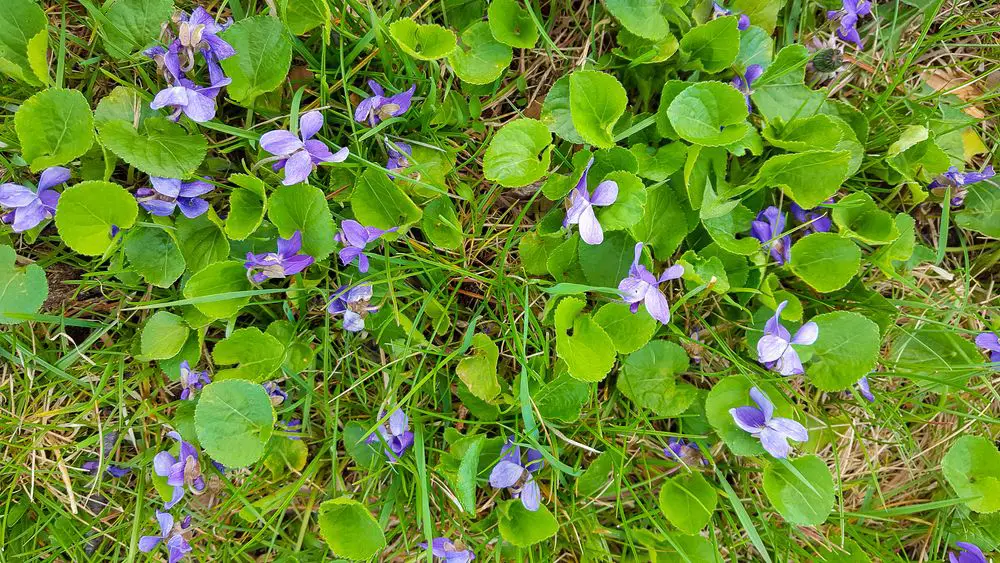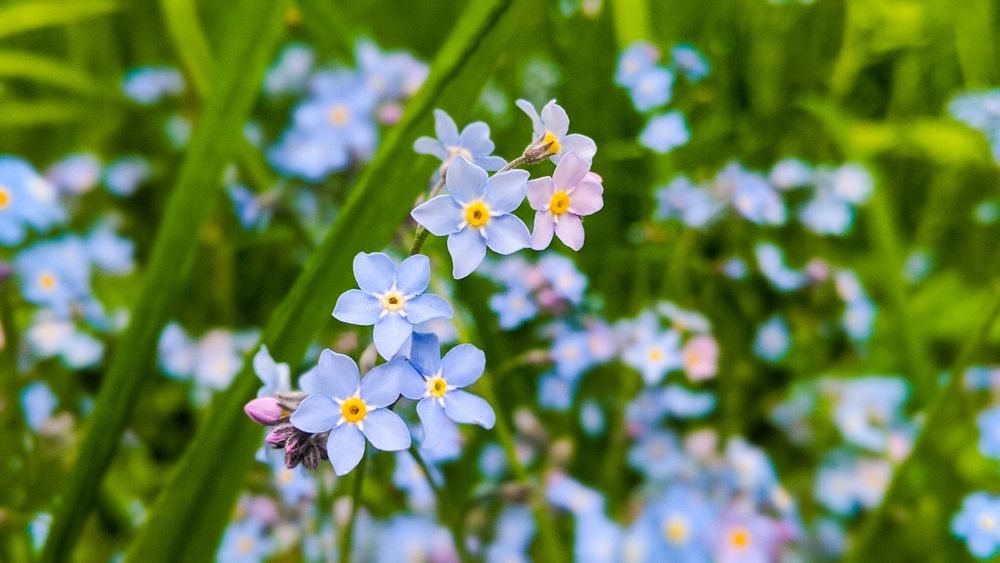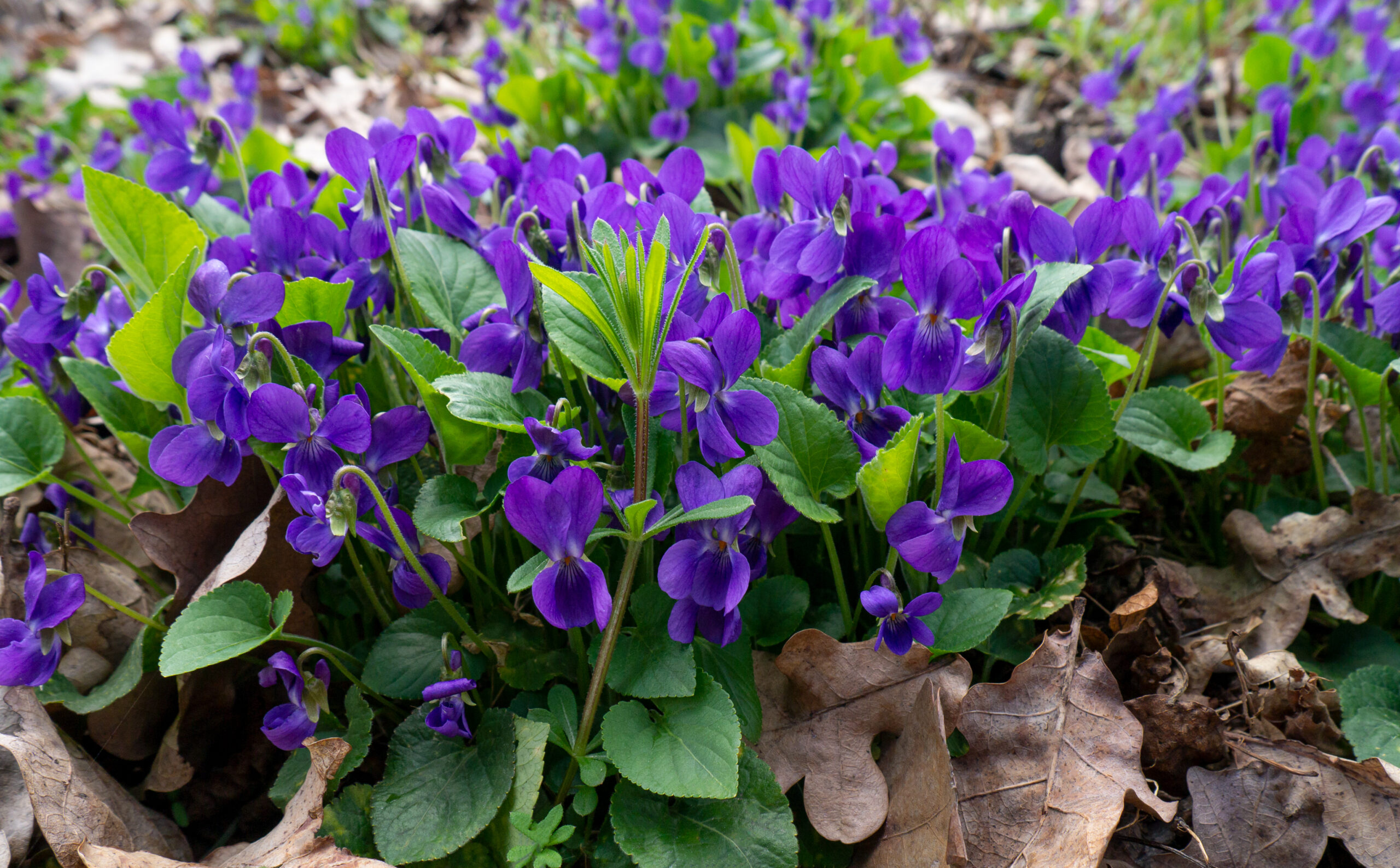Did you notice some purple flowers in your garden that you did not plant? In most probability, they are weeds with purple flowers. You should learn about these weeds to help you determine if they are safe to keep or destroy.
Any of the following ten names could be healthy plants or poisonous weeds. We will tell you whether to keep it or bin it. Wild Violet, Henbit, Creeping Charlie, Black Nightshade, Purple Deadnettle, Forget-me-nots, Musk Thistle, Purple Dead Nettle, Selfheal, Canada (or Creeping) Thistle. (The Purple Dead Nettle and Purple Deadnettle are two different plants).
Weeds with Purple Flowers
Many different kinds of weeds with purple flowers may show up in your garden.
Many of the weeds with purple flowers have similar characteristics. There are several physical differences in their purple flowers, leaves, and growing patterns. These details can help you differentiate one type of weed from the other.
When you are able to identify the type of weeds in your garden, you can take the right steps to control the spread and eradicate these weeds in your garden.
1. Wild Violet

Wild violets are a beautiful sight in your garden. They come with heart-shaped violet petals, waxy green leaves, and delicate stems.
Wild violet flowers are often candied and used in cookies and cakes. They are also used as garnishes for teas and salads.
This flower can be dried and used to treat eczema, insect bites, and chafed skin. Wild violets also have anti-inflammatory properties.
In many instances, though, wild violets tend to creep too fast. They propagate throughout your garden through rhizomes (underground stems). Rhizomes are thick. They can quickly spread wild violets everywhere they are not needed to go.
Wild violets may be pretty little plants but if you do not eliminate them, they can aggressively take over your entire garden.
You can hand pull Wild Violets but it can be too labor-intensive. You can better get rid of Wild Violets in your garden with broadleaf herbicides.
You can prevent Wild Violets from invading your garden by keeping it healthy and lush. It is also a good idea to mulch them because they make it difficult for weeds to surface.
2. Henbit
Henbit is a weed that flowers in early spring. It comes with small violet flowers and heart-shaped green leaves. They tend to sprout uninvited in your garden. They can also grow in roadsides, drainage ditches, and fields.
Henbit weeds produce about 2,000 seeds per plant. It is propagating with the dispersal of the seed heads.
Henbit weeds are edible. They are used in many recipes. You can use the leaves of this weed as you would spinach making them great for salads. You can also use the flowers of Henbit for teas and salads.
The tea you make from the leaves of Henbit can be used to reduce fever and can be used as a laxative. They can also help relieve rheumatoid arthritis.
While Henbit weeds do not tend to take over your garden, make sure to eliminate this weed before seed propagation. You can also apply herbicide in the early months of spring.
Allowing the flowers to appear will make it difficult to get rid of this weed. Maintaining a lush lawn can prevent Henbit and its flowers from blooming. Maintaining good draining is also essential because Henbit, like most weeds, loves moist soil.
3. Creeping Charlie
Creeping Charlie or Creeping Jenny, or Ground Ivy, is a perennial weed that is a member of the mint family. The Creeping Charlie has small, purple, lobe-shaped petals. The flowers appear in the late spring to early summer.
The leaves of the Creeping Charlie can be used as you would spinach. Their flowers and leaves do well for your salads. The leaves mixed with honey make a good tea.
Creeping Charlie weeds have some properties that help heal wounds.
Like other broadleaf weeds, Creeping Charlie can be a huge threat to your garden because they spread through seeds, rhizomes, and creeping stems. They thrive near shrubs and trees.
Creeping Charlie weeds love moist soil and produce purple flowers during late spring. They propagate through rhizomes and spread all over your garden competing for nutrients meant for your other plants.
These weeds can be difficult to eradicate since they can survive even the blades of a lawnmower. They are also resilient against diseases and pests.
It is best to pull out these weeds during the summer months when they are dormant. It is difficult to hand-pull these weeds because they have an extensive root system.
Avoid using a broadleaf weed killer if these weeds invade your garden beds. It is better to pull out the weeds by hoeing or by hand.
Maintain the health of your turfgrass so you prevent the Creeping Charlie from invading your lawn.
4. Black Nightshade
Black Nightshade, a summer annual, can grow leafy and tall. They come with purple flowers and berries that typically grow in bunches. They also gave purplish stems. Some Black Nightshade weeds have white flowers and red berries.
Black Nightshade weeds thrive in gardens with shade or sun and rich soil. They can also grow as a climbing plant. They can easily compete with your other plants for sunlight.
The Black Nightshade can be toxic; thus, this is not an edible type of weed. These weeds, though, have medicinal uses.
Pulling by hand or applying herbicide is the best way to get rid of these weeds. Mulching your garden can prevent the Black Nightshade from spreading in your garden.
5. Purple Deadnettle
The Purple Deadnettle is also a member of the mint family. They are hardy weeds that appear in early spring. They have small purple flowers and appear like cover mats in your garden. These weeds love full or partial sun and moist soil.
The Purple Deadnettle weeds are annuals; thus, they die on their own. Their seeds, however, remain in the ground and will grow the following spring.
The Purple Deadnettle is a fast-spreading weed just like all weeds of the mint family. It is best to get rid of the Purple Deadnettle before they drop their seeds on the ground.
The best way to get rid of Purple Deadnettle is by applying a post-emergent weed herbicide. This should be done when you first notice this weed in your garden so you do not allow the weeds to spread in your entire garden.
A well-maintained lawn will deter the Purple Deadnettle and other weeds to grow and spread in your garden.
6. Forget-Me-Nots

Forget-Me-Nots typically have blue flowers, but some have purple flowers. Many people know the Forget-Me-Nots as border plants. Truth is, they are weeds.
Some gardeners intentionally use the Forget-Me-Nots in their garden. They are beautiful and do not require much care. This perennial plant prefers well-drained and moist soil and partial to full sun.
These weeds are not dangerous but they can be a nuisance if they get out of control. They can quickly spread over your garden and grab the nourishments intended for your other plants. They can also kill your grass.
Forget-Me-Nots have culinary uses. They can be made into candies and added to cookies and cakes. You can also use them in your salads or to add sweetness to your tea.
7. Musk Thistle
The Musk Thistle or Nodding Thistle has purple or pinkish flowers. The heads of the flowers are 2 to inches across and tend to nod down. It has large leaves with barbs on their curled edges. They can have a length of 15 inches and 6 feet tall.
The Musk Thistle is an edible weed, except for its spine. Its stalks are edible, though, only when the plant is young and before getting woody.
The Musk Thistle thrives in areas with fertile soil. Goldfinches and bees love this weed. It is, therefore, a good idea to keep this weed in your garden if you need pollinators in your garden.
They can be difficult to get rid of if you allow them to take root because they can grow aggressively in your garden. It is better to get rid of the Musk Thistle than to keep them in your garden.
8. Purple Dead Nettle
The Purple Dead Nettle, an annual plant, produces purple, white, or pink tubular-shaped flowers with four petals. They grow vigorously and their flowers appear from mid-spring to summer.
This weed has triangular downward growing leaves with purple tips. It also has square-shaped stems.
The Purple Dead Nettle resists pests, diseases, as well as harsh climate and terrain. It thrives in moist conditions so if your garden is moist, your garden will be infested with this weed.
The Purple Dead Nettle is beautiful. Many gardeners keep them because they attract pollinators and bees. This weed is edible and can be used in your soups, salads, and smoothies.
This weed also has medicinal uses. It has diuretic and anti-inflammatory effects. It also makes a good medicinal tea.
The Purple Dead Nettle will take over your garden and consume nutrients and water intended for your other plants if given a chance.
9. Selfheal
The Selfheal is a member of the mint family. This weed thrives in lawns, meadows, wood clearings, and grasslands. This weed has purple flowers and oval-shaped leaves with slightly scalloped edges. The young plant has hairy stems that grow smooth as the plant matures.
Selfheal has medicinal uses. It can heal burns and wounds. It can also stop bleeding. Its tannins also have anti-inflammatory properties
This weed can restrict the growth of your grass. Mowing does not get rid of this weed, but it can be controlled with one application of herbicide. Herbicide should be applied in autumn or spring when the flowers are blooming.
10. Canada Thistle
The Canada Thistle or Creeping Thistle comes with spear-shaped leaves with sharp spines. It has bunches of purple flowers. The flowers turn white and fluffy when the weeds start to seed.
This weed is edible. You can roll the leaves to get rid of its spines and eat the weed raw. You can also cook this weed by boiling the leaves without the spines. This weed also has medicinal uses. It can soothe stomach cramps and vomiting.
The Canada Thistle thrives in low fertile soil. These are notorious weeds that are difficult to eliminate. They can, however, be eradicated by increasing soil fertility while helping your other plants to grow better.
Applying herbicide frequently, though, is the best way to get rid of the vast root system of the Canada Thistle, allowing them to die eventually.
Pretty Purple Flowers
Flowers blooming in your garden are a lovely sight because they are naturally pretty. Beautiful flowers can calm your stressed mind. They can also bring a lot of brightness to your garden, especially purple flowers.
When these beautiful flowers grow in their proper places, they are lovely to behold. These flowers can be nuances in your garden when they decide to grow where they are not supposed to grow.
Growing in the Wrong Places
Growing in the wrong places makes these beautiful flowers, weeds.
You spend hours trying to keep your garden free from weeds. It may be frustrating and stressful to find weeds in your garden. However, weeds with purple flowers are quite beautiful.
You may be tempted to keep these weeds in your garden because of how pretty they are. Some of them may even have culinary and medicinal uses. In most instances, though, you will want to get rid of them because they may take over your garden.
Weeds with purple flowers are quite common. They can aggressively invade your flower beds and lawns. While they are attractive, your main concern is that they successfully compete with your plants for nutrients, water, and sunlight.
Benefits and Risks of Weeds
It is common for people to think of weeds as nuances in a garden and lawn. The truth is, many of these weeds can provide some benefits to your garden.
- The roots of some weeds can help prevent erosion and fertilize the soil.
- They provide food to pollinators.
- Some weeds have medicinal benefits.
- With these benefits, you need to balance some of the risks of having these weeds with purple flowers spreading in your garden.
- Some weeds block the sunlight for your other plants because they tend to be taller.
- Weeds compete with your other plants for nutrients and water.
- Aggressive weeds can quickly spread across your garden and overpower your other plants.
- Given these facts, it is up to you to decide whether to allow these weeds to grow in your garden or pull them out.
Final Thoughts on Weeds with Purple Flowers on your Lawn
After reading this article, when you see purple flowers, you haven’t planted, you should be able to tell whether to keep it or bin it. It’s now all up to you.
Jenny Marie
Tribal Writer
Edited By
Patricia Godwin

